



Elementary Classroom Circuit
Elementary Carts are portable and assist in creating a school-wide environment of Action Based Learning!
ABL offers 2 types of Circuits:
- Elementary ELA Circuit
- Elementary Math Circuit
- Click here to view the ABL Calming Cart
Action Based Learning Mobile Circuits offer schools more flexibility to implement Action Based Learning Strategies without compromising space and budget. Circuits provide ABL equipment and support materials content specific for the elementary level to assist educators in integrating academics with purposeful movement.
Support materials provide over 120 Activities and 35+ tools and equipment stations on board the mobile classroom circuit. The provided activities can be easily modified and adapted to provide hundreds of additional activities for students as they progress. Circuits include 141 page ABL Manual, Academic Charts, Cue Cards, Activity Guides, Academic Mats, Wall Mounts, and ABL accessories/equipment that can be quickly pulled off the circuit and used in the hallways, classrooms, or common areas for quick purposeful movement activities that prepare the brain to learn throughout the day.
All circuits include:
- ABL Academic Mats
- ABL Wall Mounts
- Boomerboard(s)
- Student Academic Cards
- ABL Manual
- Activity Guides & Activity stations/equipment to support all 12 Foundations of Learning Readiness.
- Intro phone consultation w/ ABL Master Trainer: FREE
+ ABL Academy Online Course!
Each circuit includes a free course to provide instructor training on how to use the ABL cart and strategies to integrate academics with cart activities - free with order provided by ABL Online Academy!
Recommended for those with or without an ABL Lab! Also excellent for those who are already operating an existing ABL Lab within their school and looking to bring ABL beyond the lab. The concepts practiced using the Math and Reading circuits are a direct extension of the work students do in the lab to support purposeful movement strategies and anchor learning. The equipment is versatile to accommodate various elementary grade levels (K-5) and allow students of varying capabilities to practice the 12 Foundations of Learning Readiness.
__
Why are purposeful movement activities important?
Neuroscience shows the relationship between the brain and body plays a critical role in the child's overall development and ability to learn. Research shows, practicing specific movements, can strengthen these connections and improve reading, writing, memory tasks, & allow children to absorb & retain information more efficiently.
What types of purposeful movement activities are critical to learning?
There are 12 critical areas necessary for a child to develop in order to achieve their full academic potential. These are called the 12 Foundations of Learning Readiness:
1- Crossing the Midline - Cross Lateralization
2- Body in Space - Vestibular/Proprioception
3- Balance - Spatial Orientation
4- Visual Development - Encoding Symbols
5- Rhythm - Beat Awareness and Beat Competency
6- Tactile Learning- Sensory Motor and Fine Motor Skills
7- Motor Skills - Locomotor and Nonlocomotor Skills
8- Eye/Hand Eye/Foot Coordination - Manipulative Skills
9- Physical Fitness- Strength and Flexibility
10- Cardiovascular Fitness- Aerobic
11- Problem Solving: Embodied Cognition
12- Self Management: Mindfulness and Self-Awareness
https://vimeo.com/436223515















![Student Pedal Desk [6-12th Grade] - Action Based Learning](http://abllab.com/cdn/shop/files/Screenshot_2024-07-31_at_1.39.27_PM_{width}x.png?v=1722447617)
![Student Pedal Desk [6-12th Grade] - Action Based Learning](http://abllab.com/cdn/shop/files/Screenshot2024-08-05at3.25.53PM_{width}x.png?v=1722885959)
















![Student Pedal Desk [K-2nd Grade] - actionbasedlearning](http://abllab.com/cdn/shop/products/Untitleddesign_26_{width}x.png?v=1620933979)

![Student Pedal Desk [K-2nd Grade] - Action Based Learning](http://abllab.com/cdn/shop/products/Markerboard_4_83167fda-506c-489a-a9b2-16346d50d41d_{width}x.png?v=1724419521)






